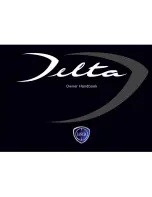
3-25
03
Small children are best protected from in-
jury in an accident when properly re-
strained in the rear seat by a Child Re-
straint System that meets the
requirements of the Safety Standards of
your country. Before buying any Child Re-
straint System, make sure that it has a la-
bel certifying that it meets Safety Stan-
dard of your country. The Child Restraint
System must be appropriate for your
child’s height and weight. Check the label
on the Child Restraint System for this in-
formation. Refer to “Child Restraint Sys-
tems” in this chapter.
Larger children
Children under age 13 and who are too
large for a booster seat should always oc-
cupy the rear seat and use the available
lap/shoulder belts. A seat belt should lie
across the upper thighs and be snug
across the shoulder and chest to restrain
the child safely. Check belt fit periodical-
ly. A child’s squirming could put the belt
out of position.In the event of an acci-
dent, children are afforded the best safety
restrained by a proper Child Restraint
System in the rear seats.
If a larger child over age 13 must be seat-
ed in the front seat, the child must be se-
curely restrained by the available lap/
shoulder belt and the seat should be
placed in the rearmost position. If the
shoulder belt portion slightly touches the
child’s neck or face, try placing the child
closer to the center of the vehicle.If the
shoulder belt still touches their face or
neck, they need to be returned to an ap-
propriate booster seat in the rear seat.
WARNING
• Always make sure larger children’s
seat belts are worn and properly ad-
justed.
• NEVER allow the shoulder belt to
contact the child’s neck or face.
• Do not allow more than one child to
use a single seat belt.
















































